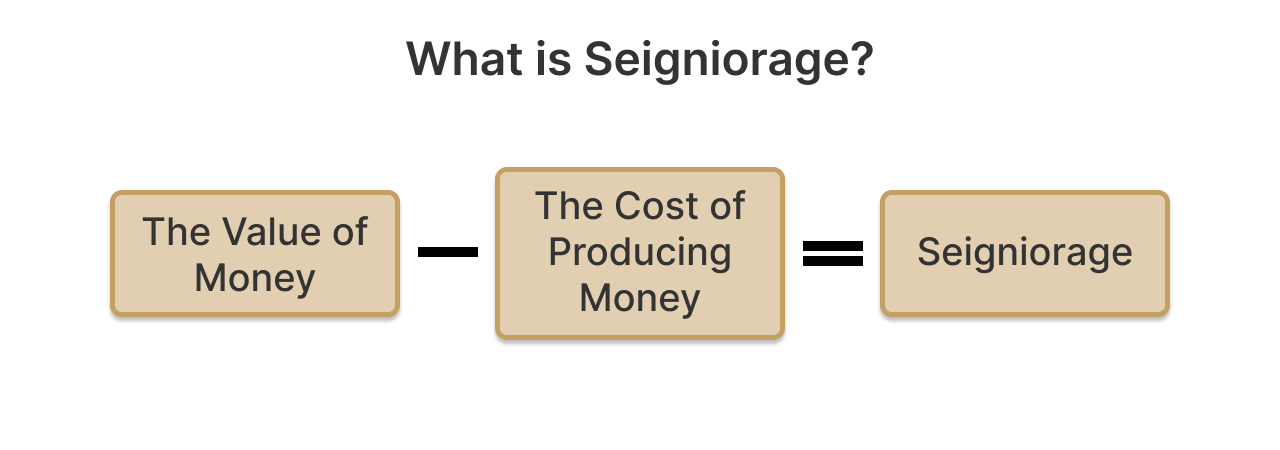Seigniorage
1 min read
Seigniorage is the profit a government makes from creating money. This profit comes from the difference between the money’s value and the cost to produce it.
For example, if it costs the government 20 cents to make a $1 bill, the seigniorage is 80 cents. Whether money takes the form of coins, banknotes, or digital entries, its market value is typically greater than its cost of production.

Fiat money, the most common type of money used today, costs very little to produce because its value is based on trust in government authority. When new money is created, it increases the total money supply, which can lead to inflation and reduce the value of existing money. As such, seigniorage acts like a hidden tax: the government earns money by creating currency, while people experience a decrease in purchasing power.
Seigniorage does not have to always describe a form of government revenue; it can also describe a loss. For example, it currently costs more than one cent to produce a penny. As such, whenever the US Mint produces pennies they are incurring a seigniorage cost.